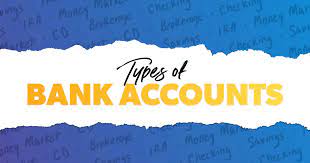The Union Budget 2025 is highly anticipated, especially regarding income tax reforms that could impact millions of taxpayers. As Finance Minister Nirmala Sitharaman prepares to present the budget, individuals and businesses alike are eager to see what changes will be introduced. This article explores the Budget 2025 expectations related to income tax, deductions, and reliefs. Stay tuned for Union Budget Live updates as they unfold.
1. Possible Changes in Income Tax Slabs
One of the biggest Budget 2025 expectations is a revision in the income tax slabs. Taxpayers are hoping for an increase in the basic exemption limit, which currently stands at ₹2.5 lakh under the old tax regime and ₹3 lakh under the new regime. Experts suggest that the government may increase these limits to provide relief, considering inflation and rising living costs.
Additionally, there is speculation that the 30% tax slab (currently applicable to incomes above ₹15 lakh in the new regime) could be revised, potentially lowering the burden on middle-class taxpayers.
2. Higher Standard Deduction for Salaried Individuals
The salaried class has been advocating for a higher standard deduction. At present, the standard deduction under the old regime is ₹50,000. There are expectations that this could be raised to ₹75,000 or even ₹1 lakh in Budget 2025. An increase in this deduction would provide much-needed relief to salaried employees and pensioners.
3. Enhancements in Section 80C and 80D Benefits
Under Section 80C, taxpayers can claim deductions up to ₹1.5 lakh on investments such as PPF, EPF, and life insurance premiums. However, this limit has remained unchanged for several years. Many experts believe the government might increase the limit to ₹2 lakh or higher.
Similarly, under Section 80D, taxpayers can currently claim deductions on health insurance premiums (up to ₹25,000 for individuals and ₹50,000 for senior citizens). With rising healthcare costs, there is an expectation that these limits will be enhanced.
4. Relief for Home Loan Borrowers
Many homebuyers are hoping for a higher tax deduction on home loan interest. Currently, Section 24(b) allows for a deduction of up to ₹2 lakh on home loan interest payments. With increasing real estate prices and higher interest rates, the government may consider raising this limit to ₹3 lakh or more.
Additionally, first-time homebuyers under Section 80EEA can claim an additional deduction of ₹1.5 lakh, but this benefit was discontinued in previous budgets. There is speculation that it might be reintroduced.
5. Incentives for Startups and Businesses
Startups and MSMEs are crucial for economic growth, and they are expecting significant tax relief in Union Budget Live announcements. Some of the expected measures include:
- Extension of the tax holiday for startups beyond March 2024.
- Reduction in corporate tax rates for MSMEs.
- Incentives for investment in research and development.
Additionally, businesses are hoping for simplification in GST compliance and ease of filing returns.
6. Expansion of New Tax Regime Benefits
The new tax regime, introduced in 2020, offers lower tax rates but removes most deductions. However, many taxpayers still prefer the old regime due to its benefits. To make the new tax regime more attractive, the government may introduce:
- Additional deductions for investments and savings.
- An increase in the basic exemption limit.
- More tax reliefs for senior citizens.
If these changes are made, more taxpayers may opt for the new regime.
7. Possible Wealth Tax or Super-Rich Tax
There has been ongoing debate about imposing a wealth tax or increasing the surcharge on high-income individuals. Currently, those earning above ₹5 crore pay a 37% surcharge. There is speculation that a new slab might be introduced for ultra-high-net-worth individuals.
On the other hand, some experts argue that lowering the surcharge would encourage investment and economic growth.
8. Social Welfare and Tax Relief for Senior Citizens
Senior citizens have been demanding additional tax benefits, such as:
- Higher exemption limits for pension and fixed deposit interest.
- Reduction in TDS on senior citizen savings.
- Additional deductions on medical expenses.
These changes could significantly improve the financial well-being of retirees.
Conclusion
The Income Tax Budget 2025 Expectations Live discussions highlight the anticipation surrounding tax relief, deductions, and policy changes. As the government aims to balance economic growth with fiscal responsibility, taxpayers are hopeful for reforms that provide relief while boosting investments.
Stay tuned for Union Budget Live updates as the Finance Minister unveils the final proposals on February 1, 2025.









